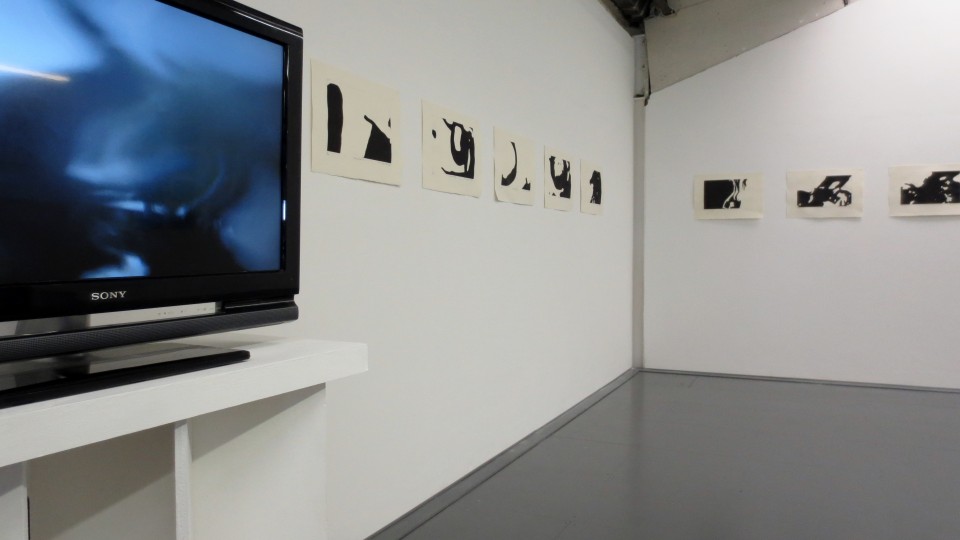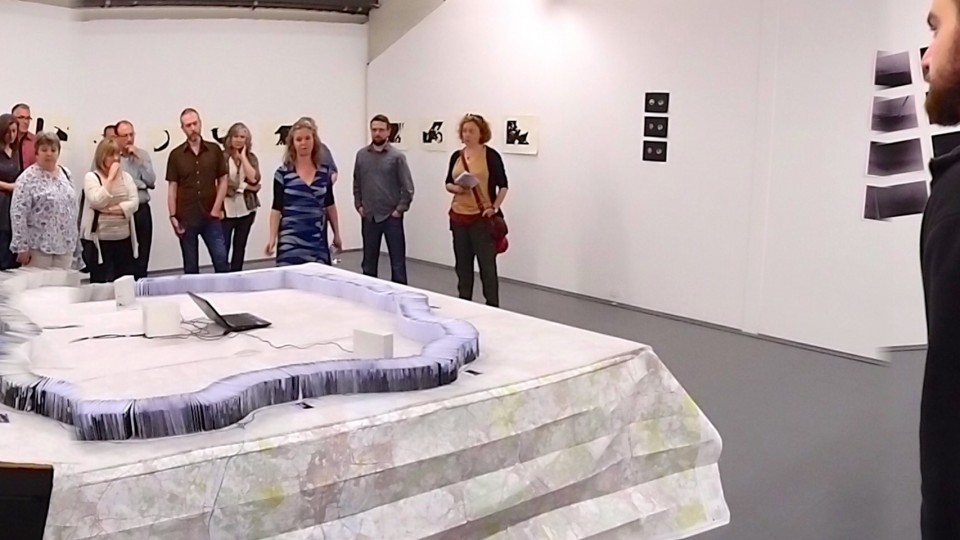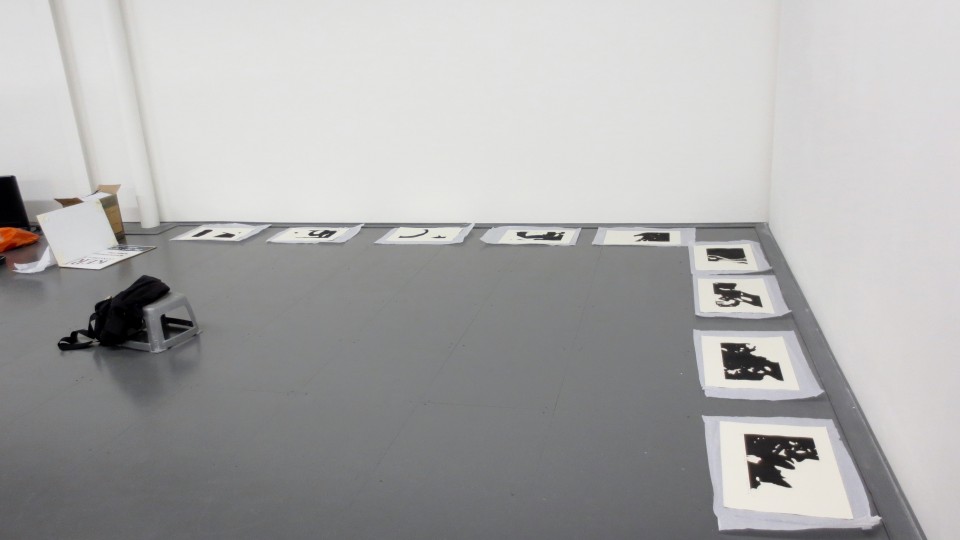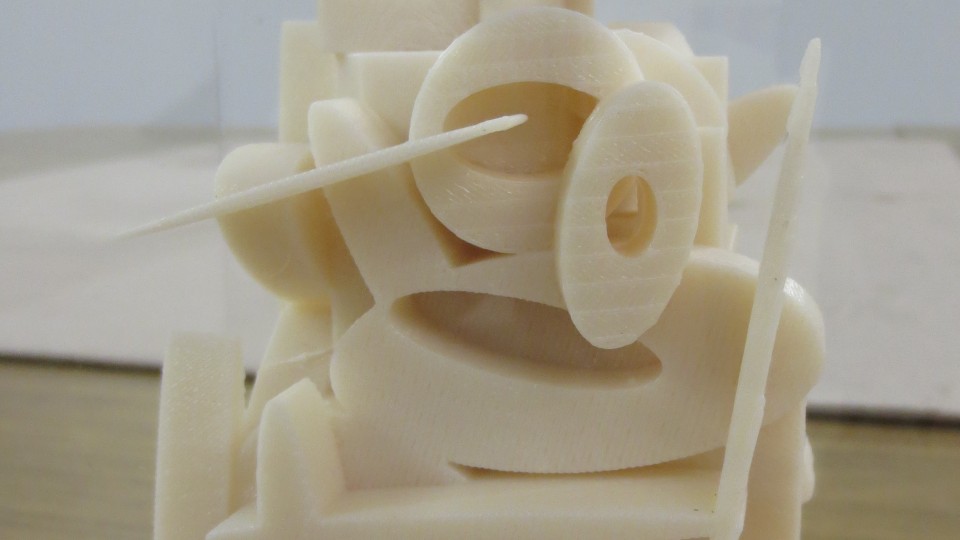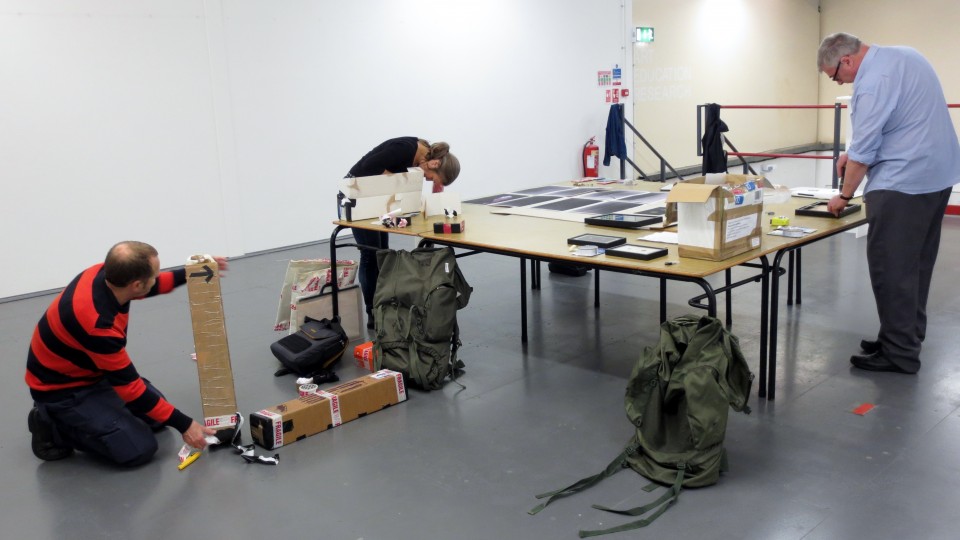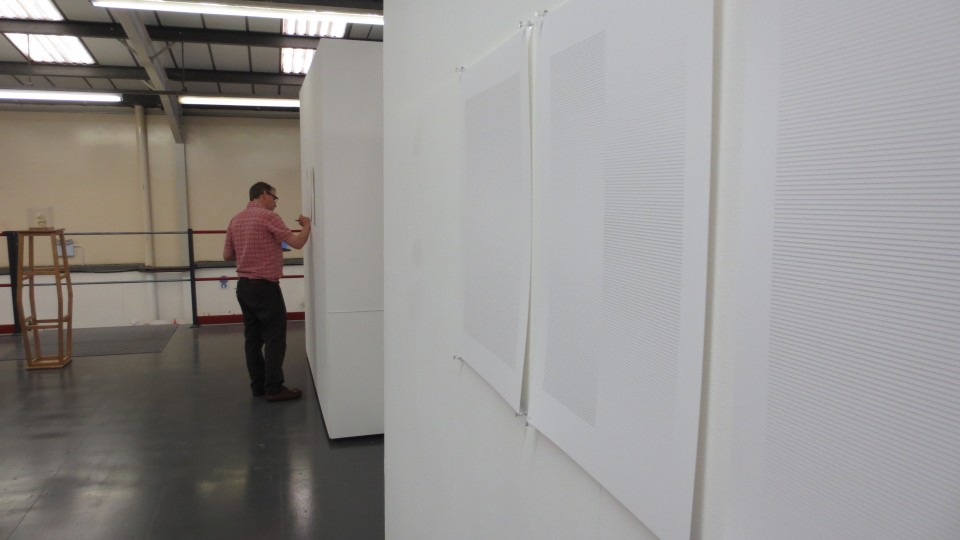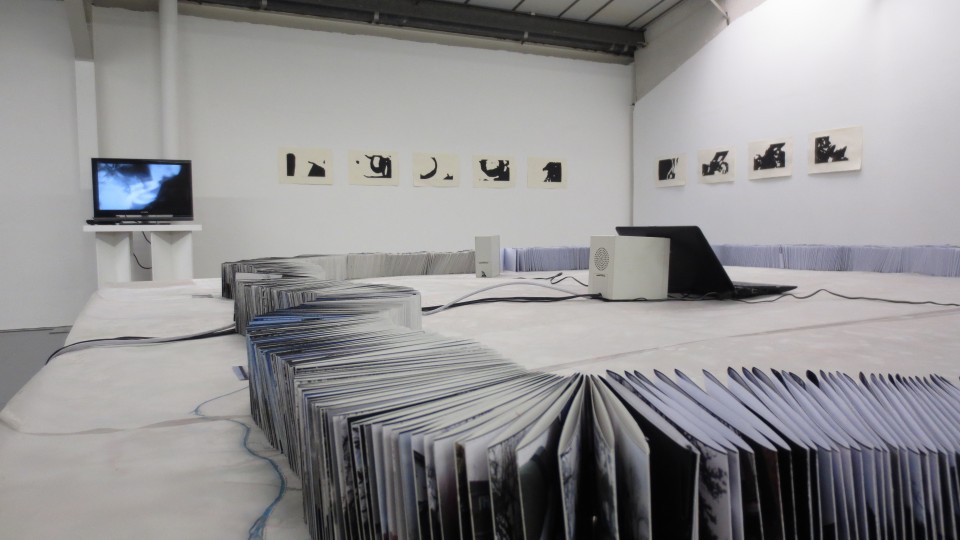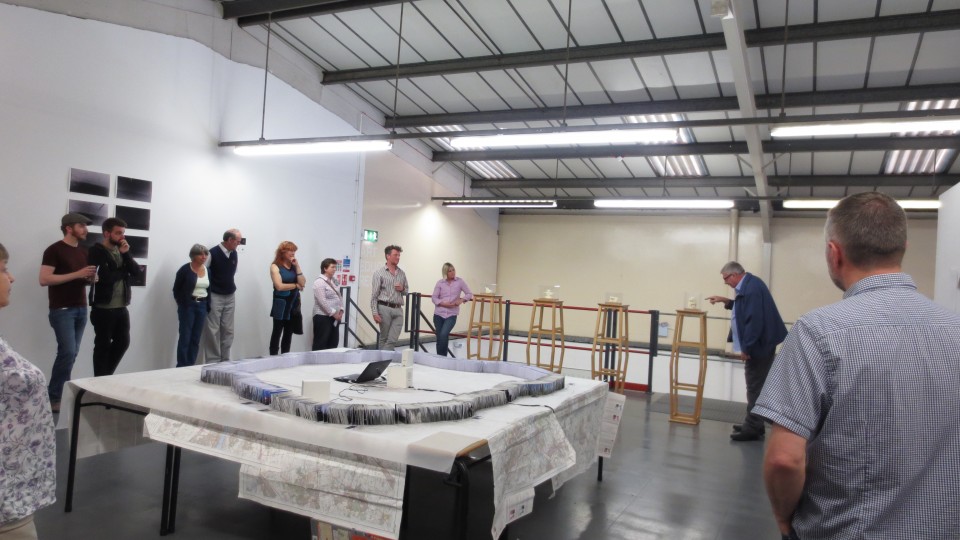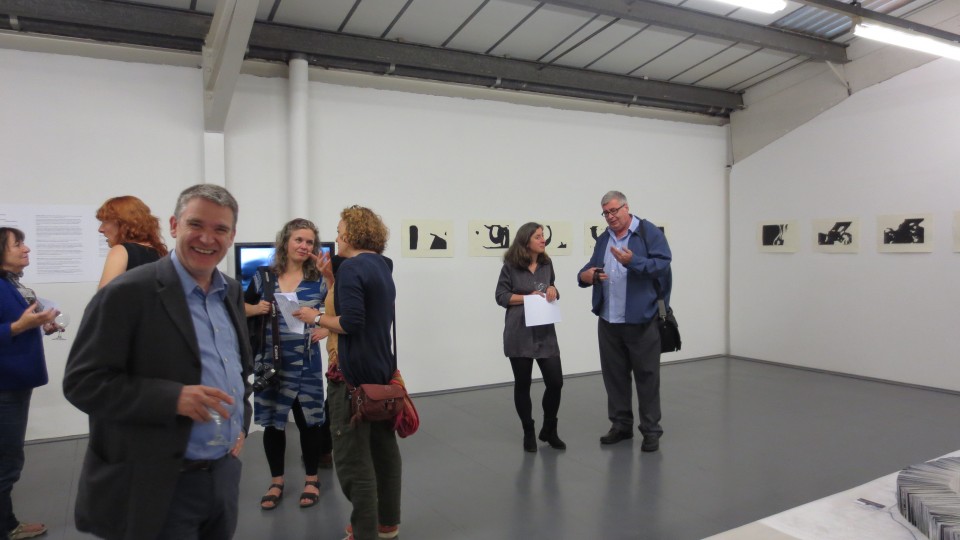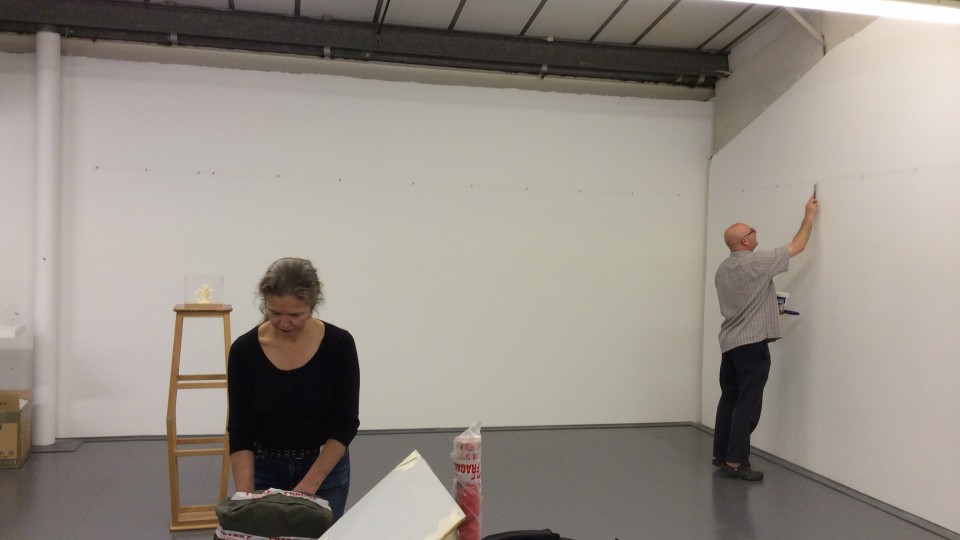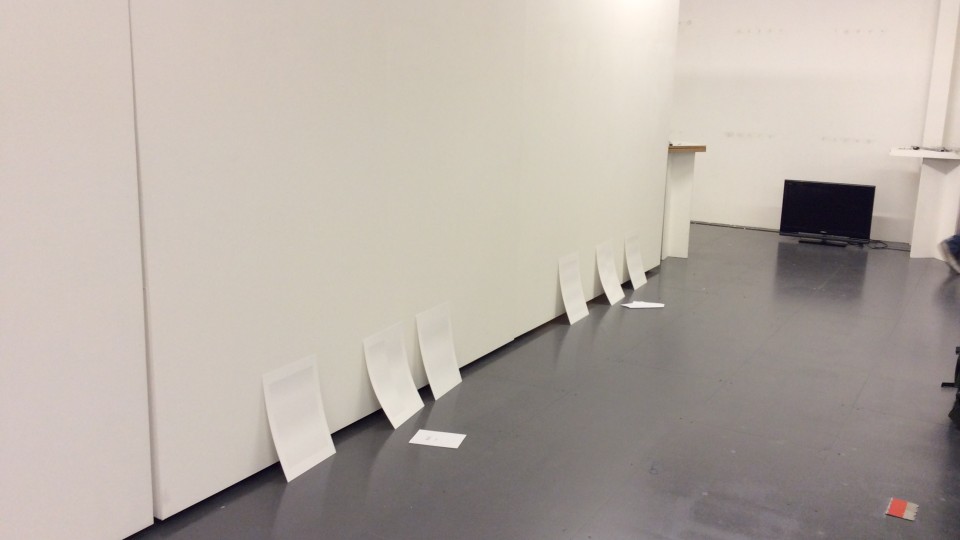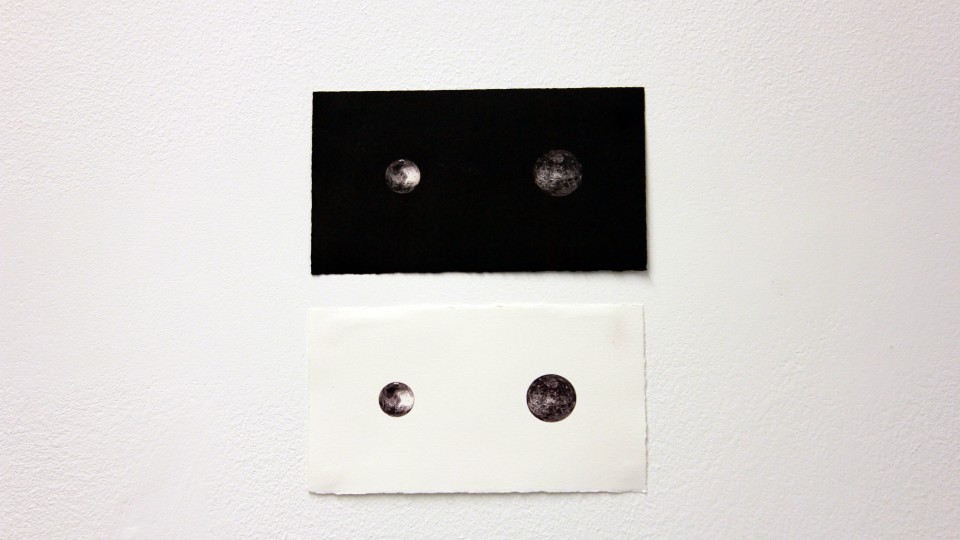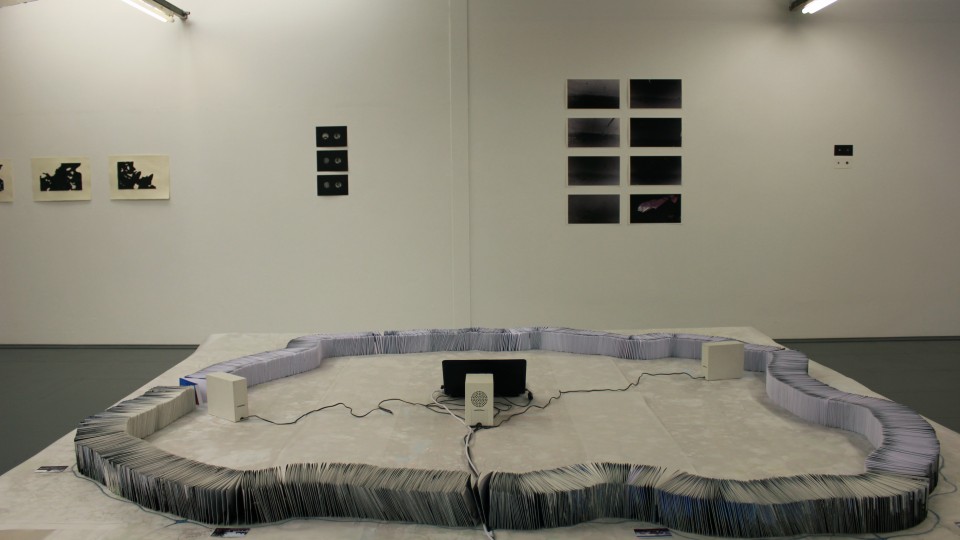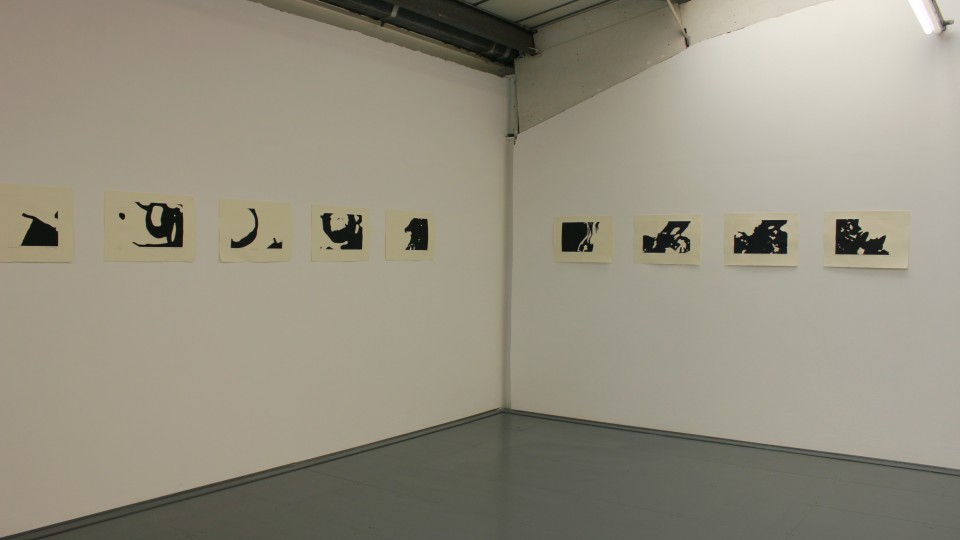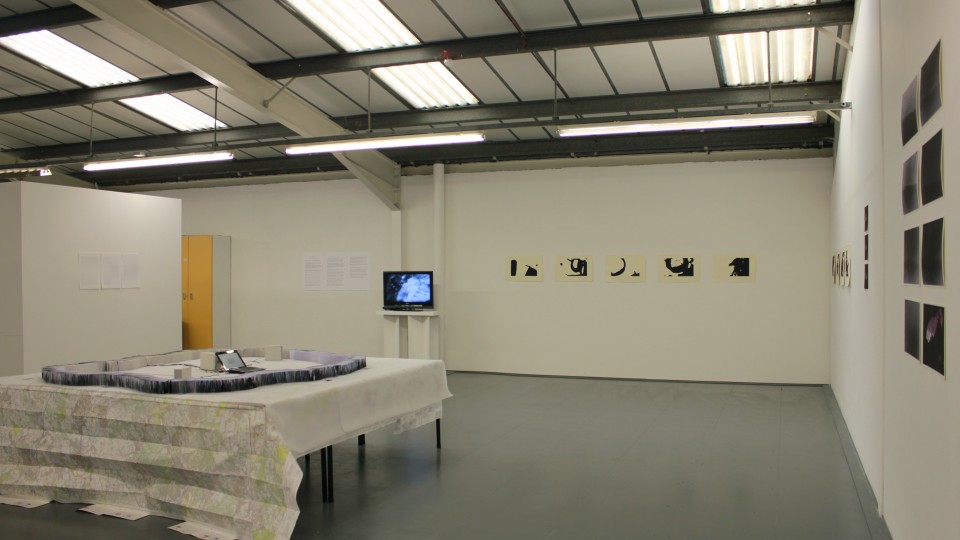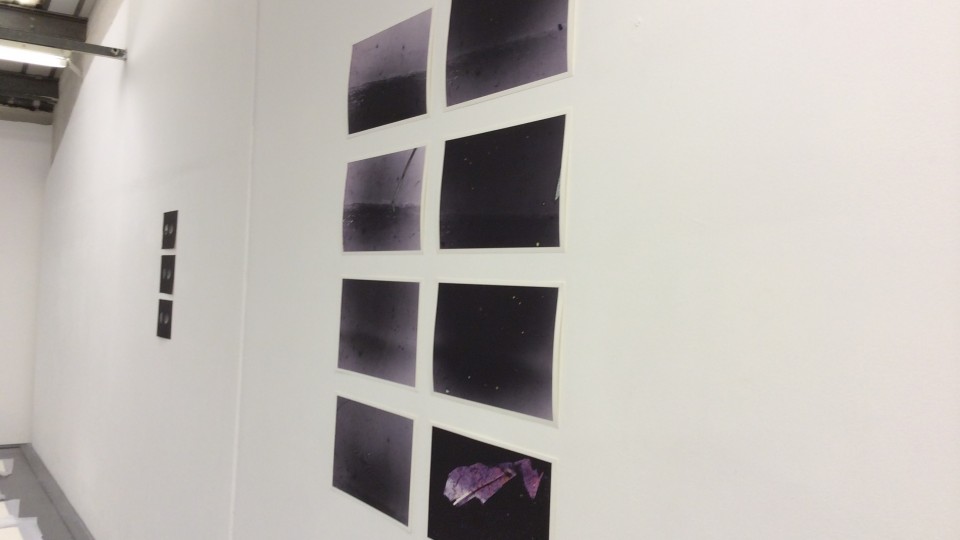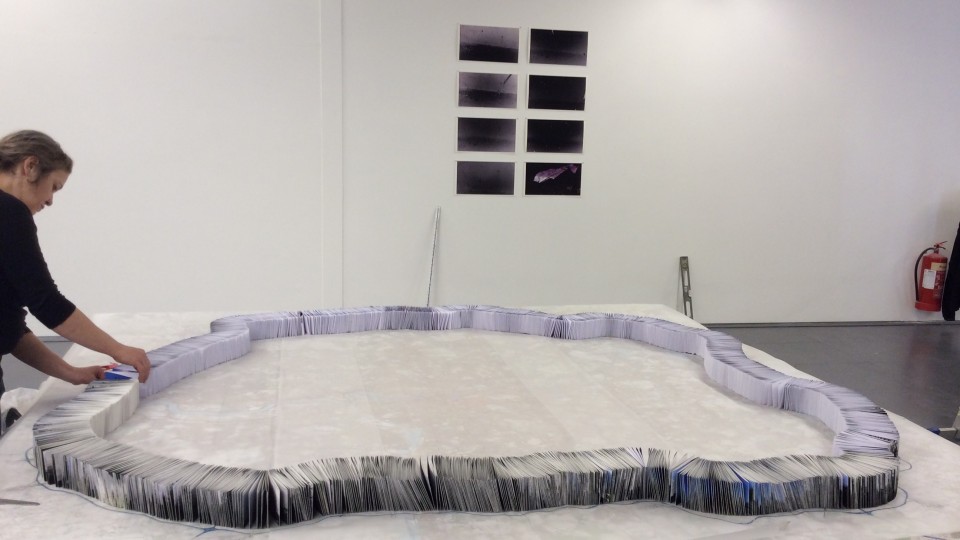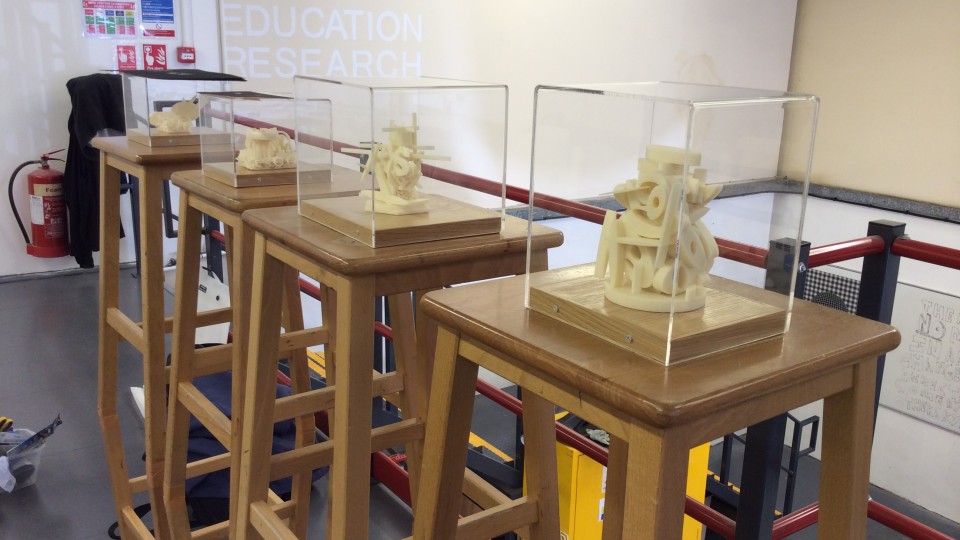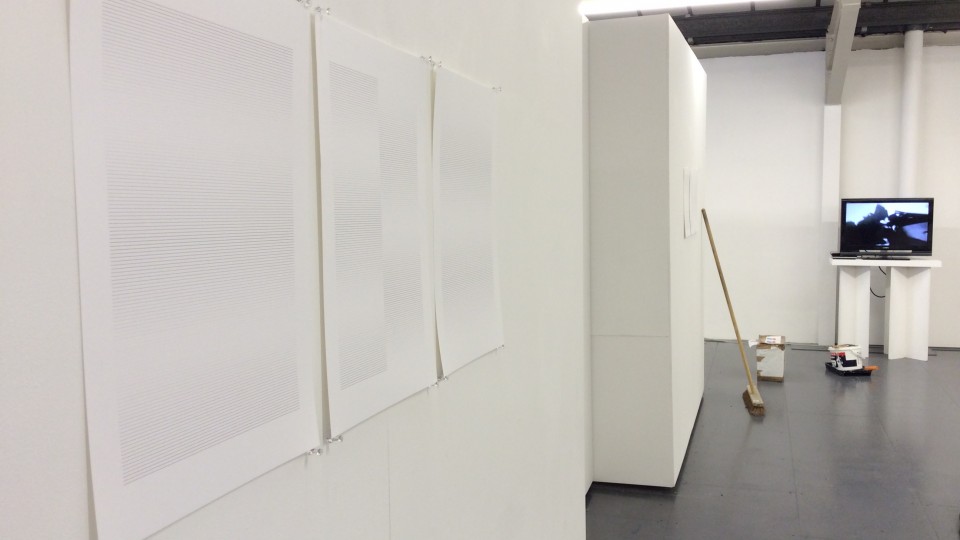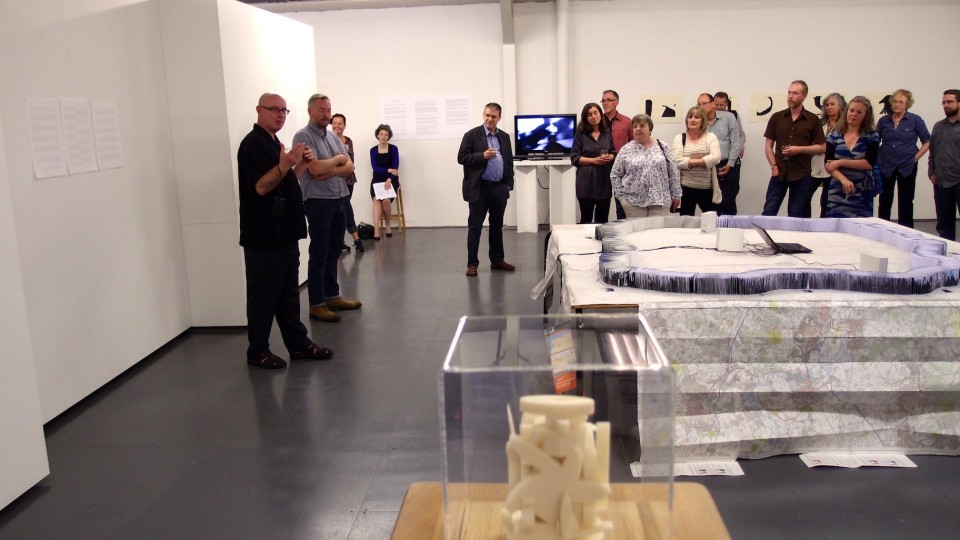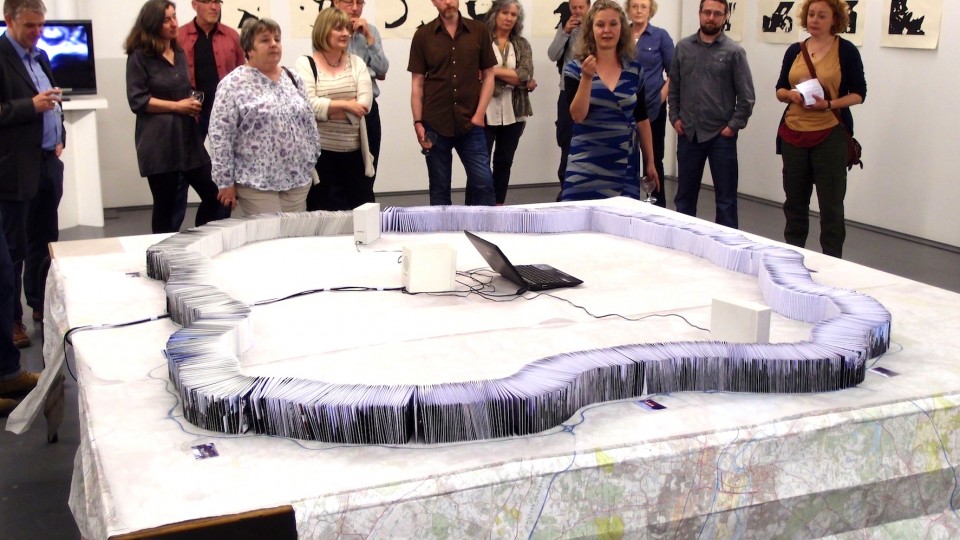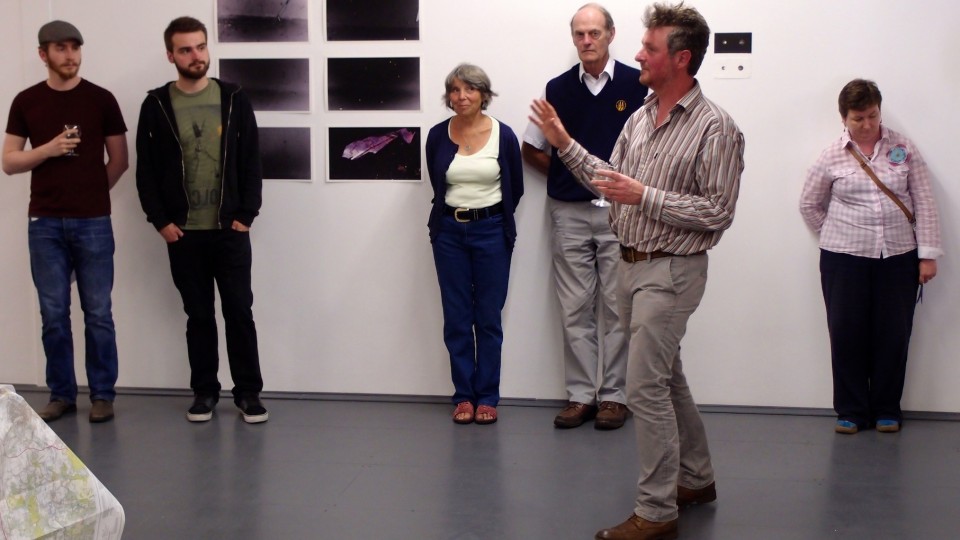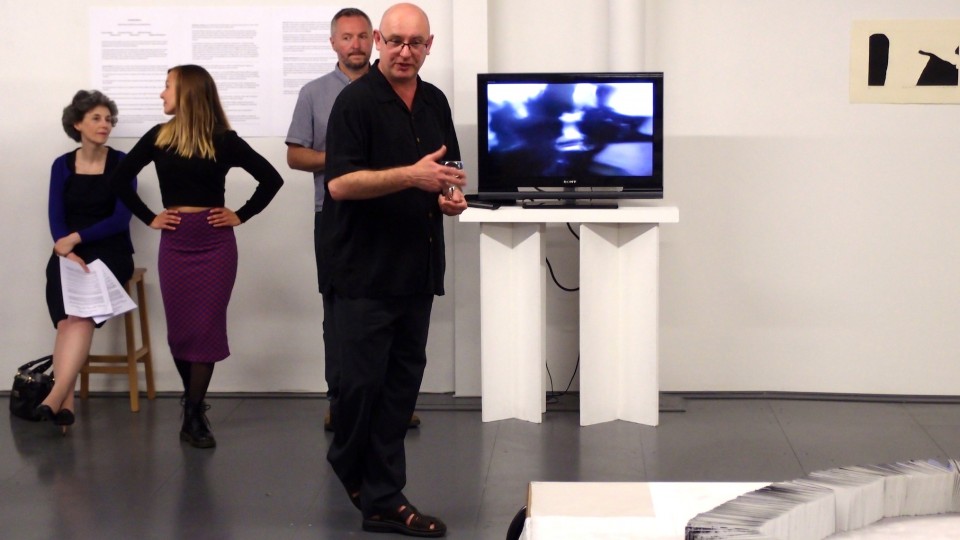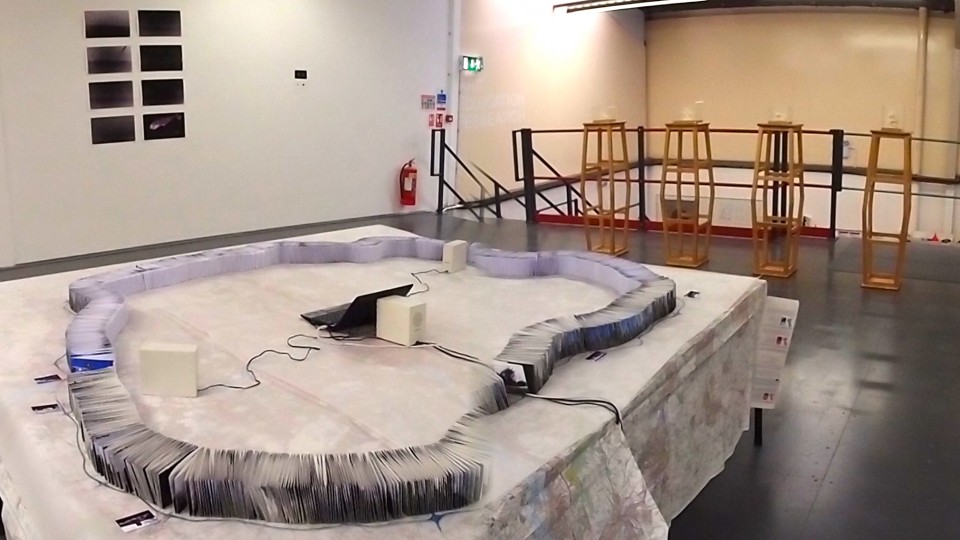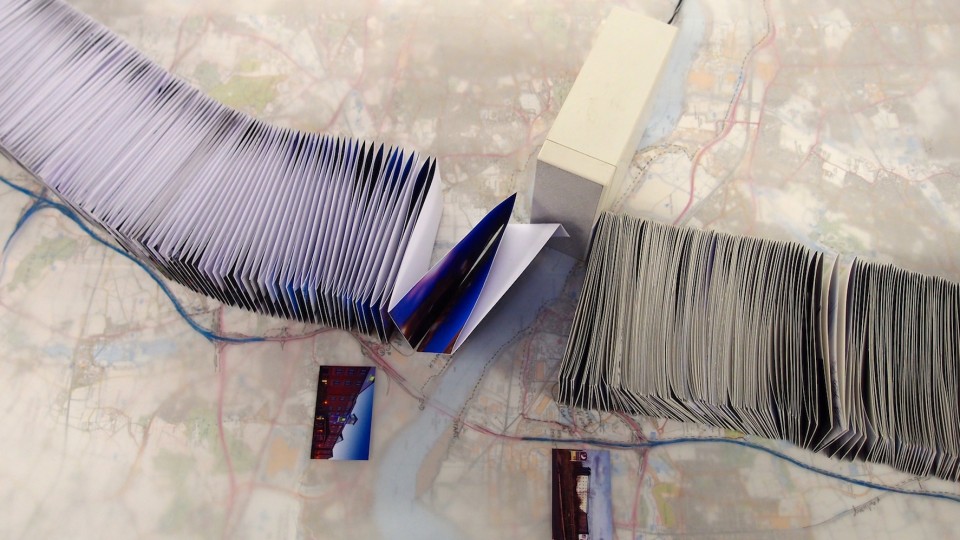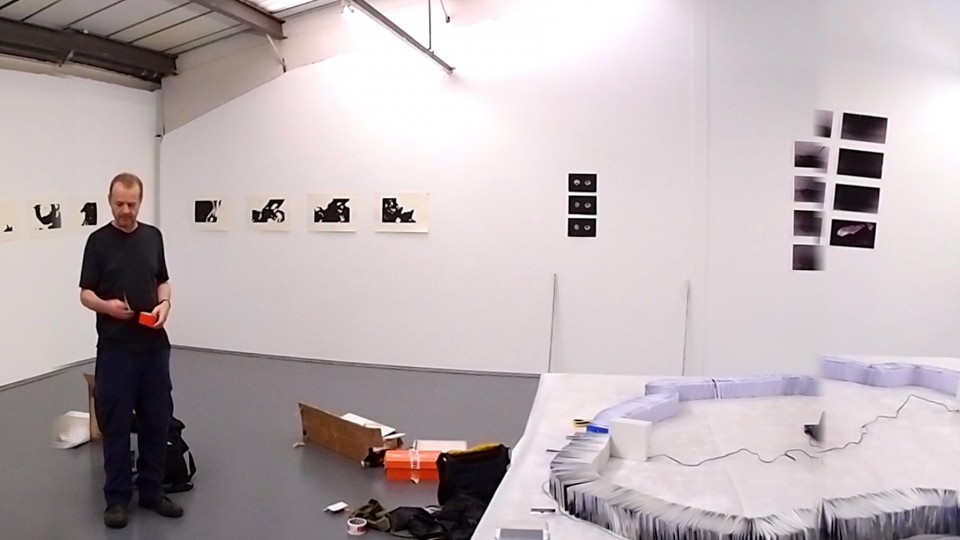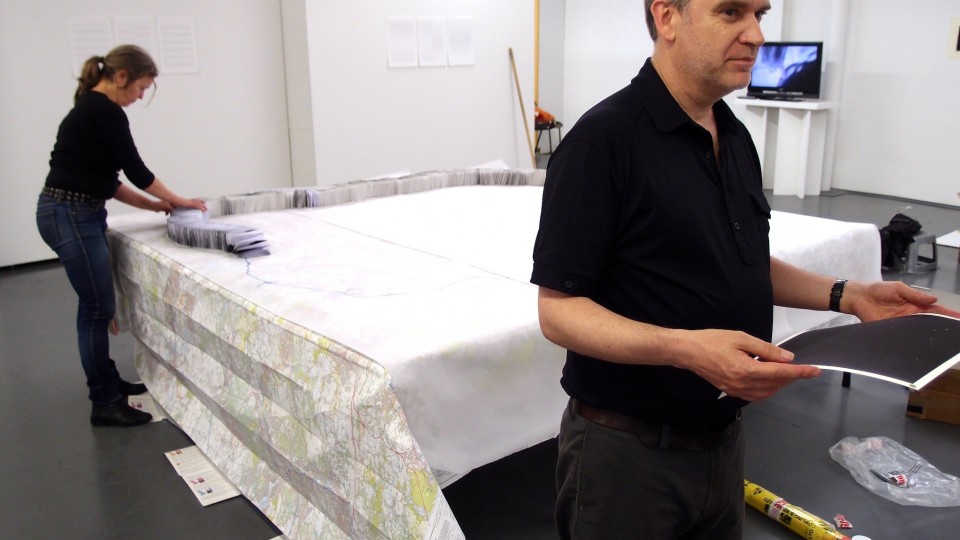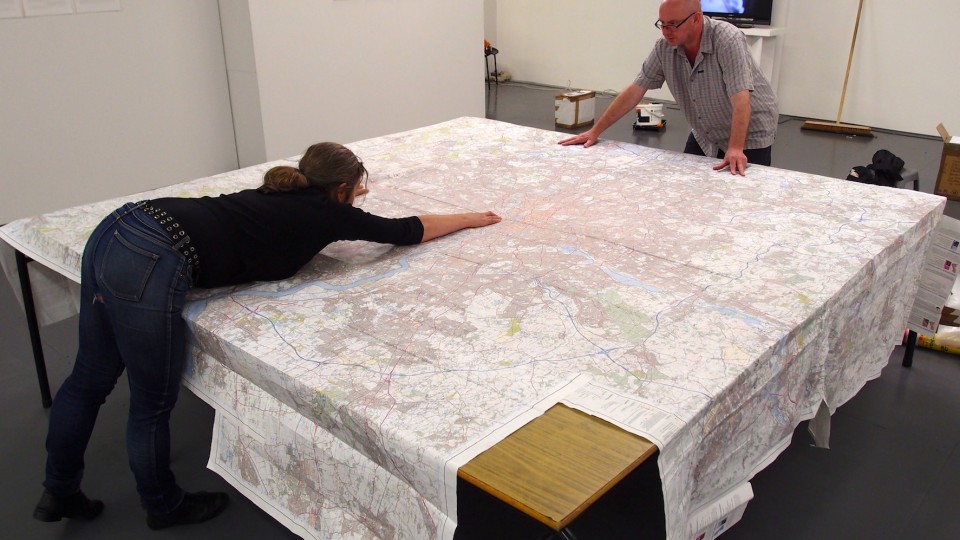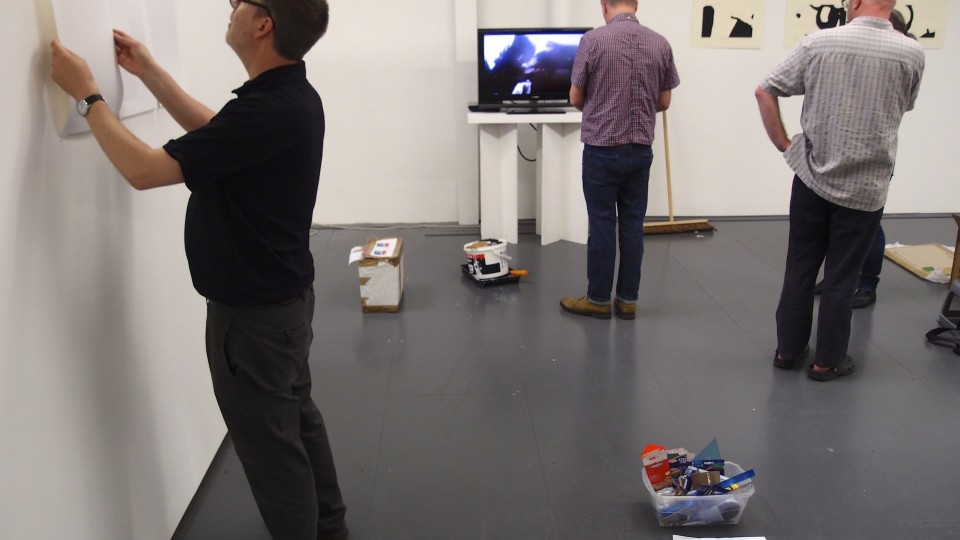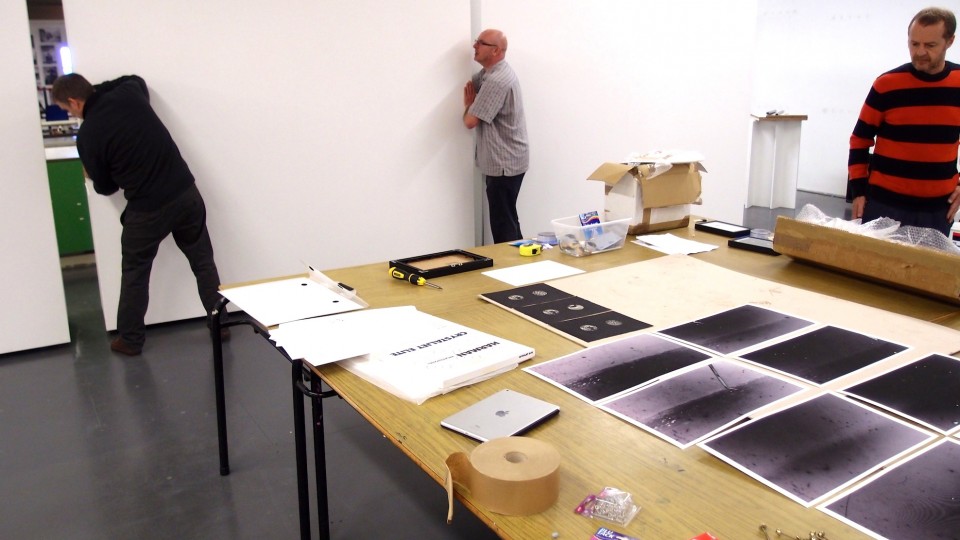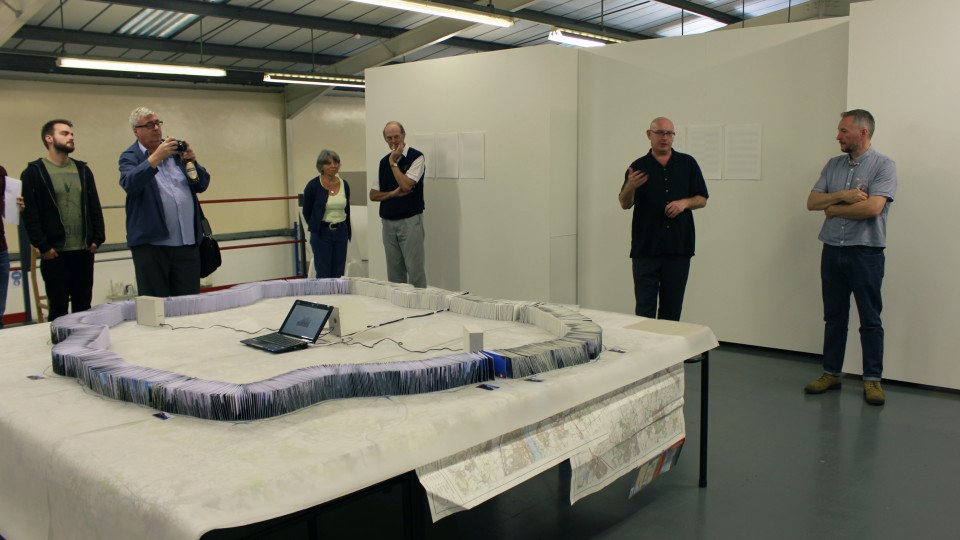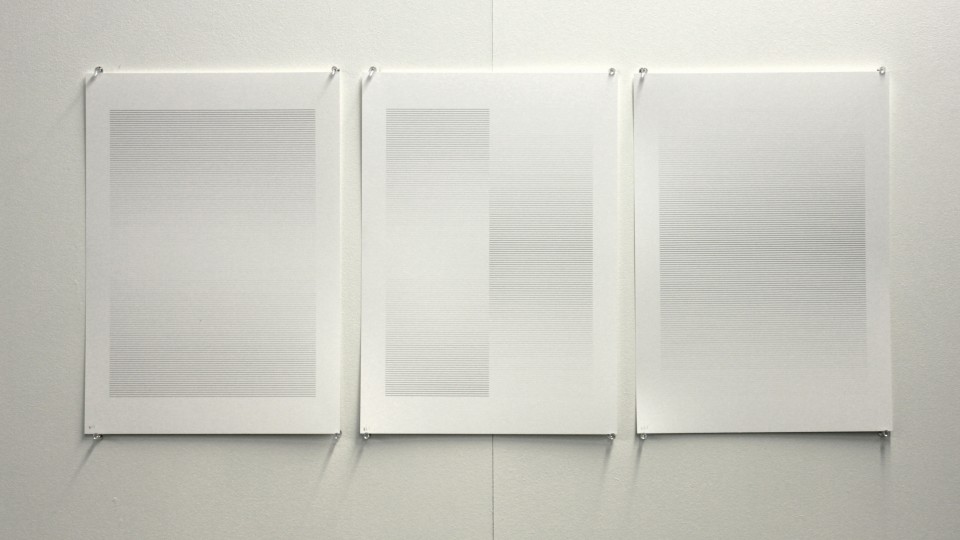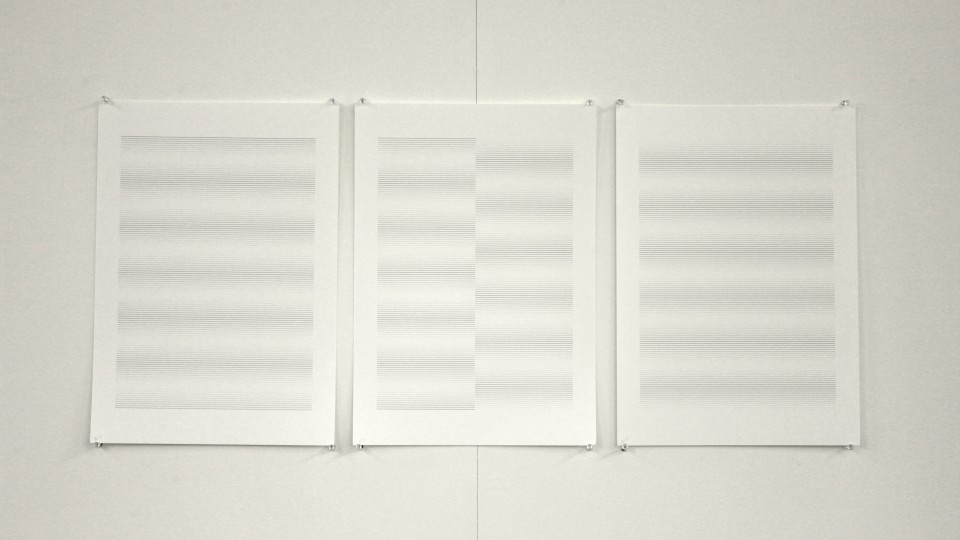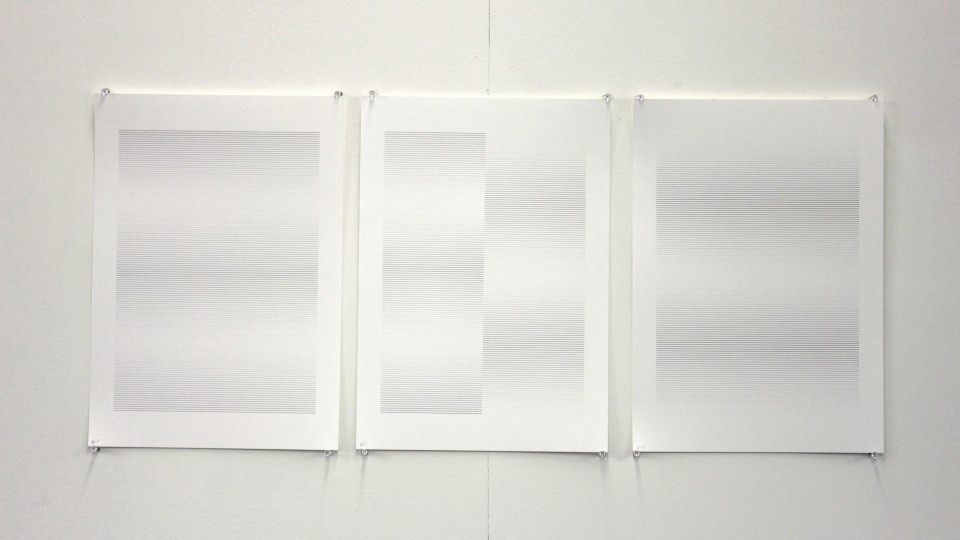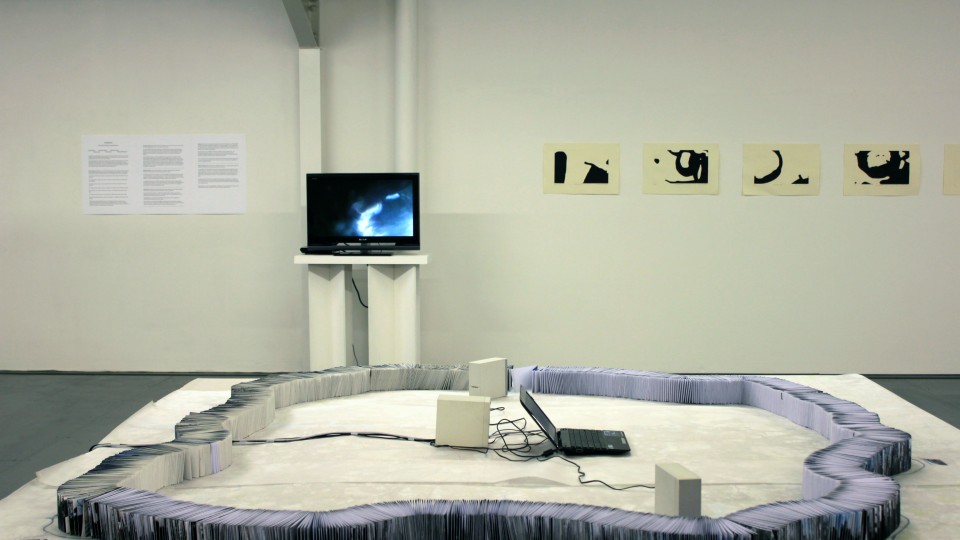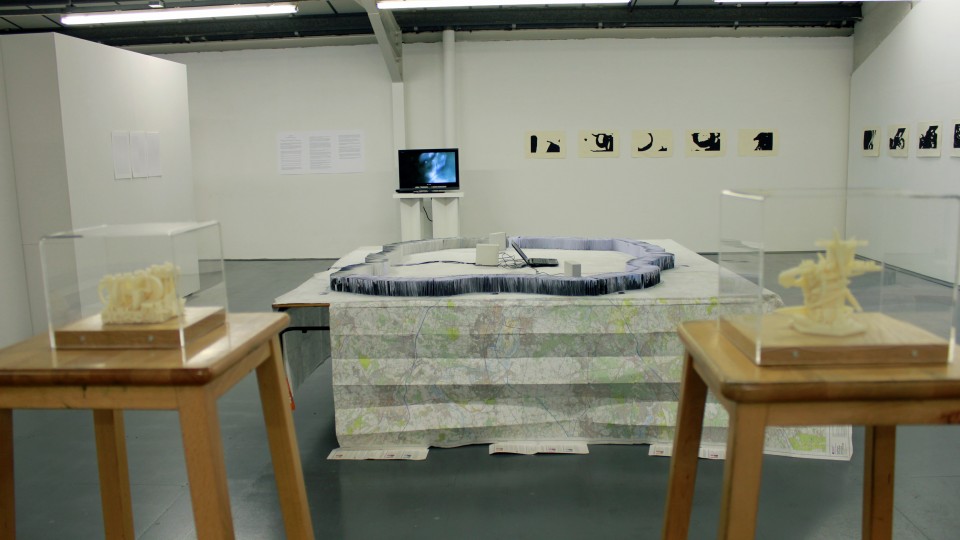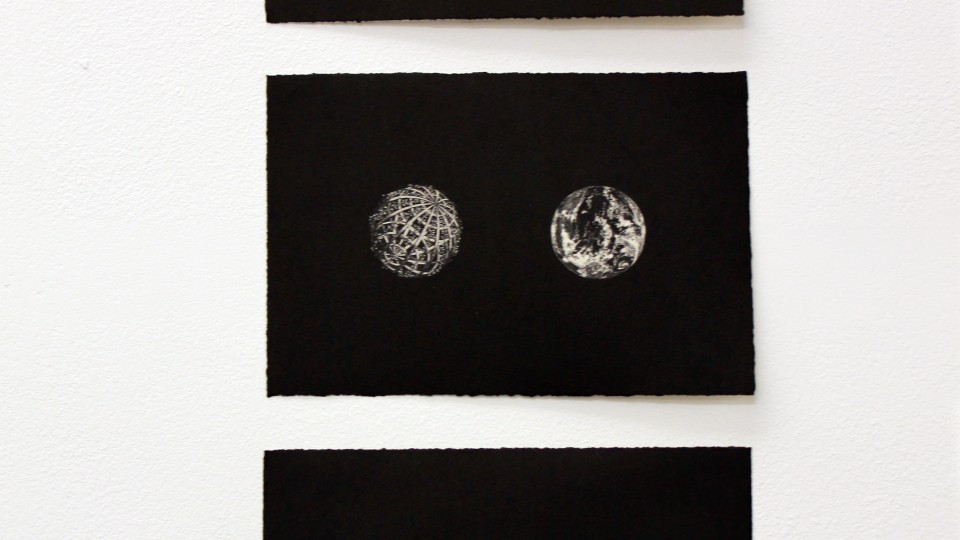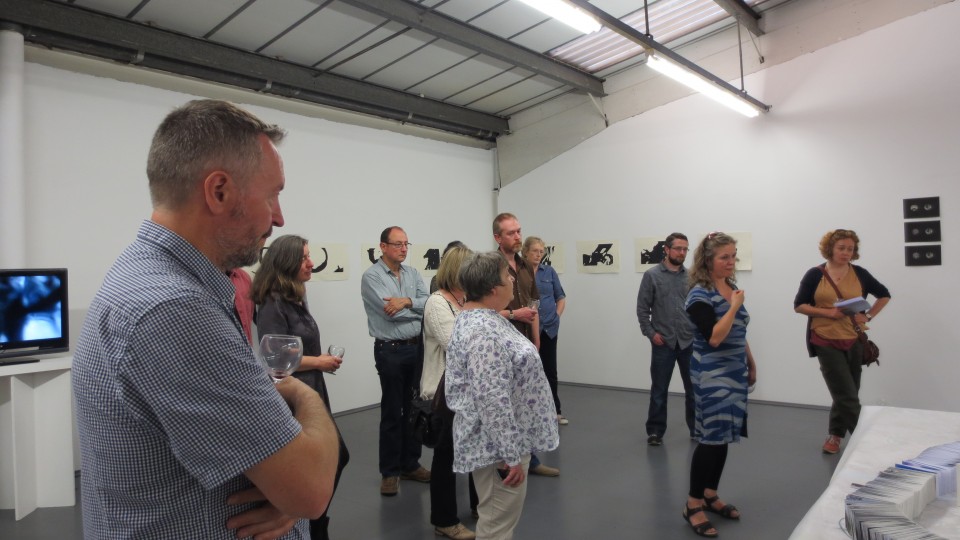The Combinations exhibition took place at the Centre for Contemporary Printmaking, at the Seacourt Print Workshop in Bangor Northern Ireland from July 9th to August 1st 2014.
Combinations 2014
Duncan Bullen, Veronique Chance, Nicholas Devison, Johanna Love, Mark Graver, Stephen Mumberson
Combinations brings together a group of artists from New Zealand and the UK with a shared interest in hybrid and intermedial approaches to printmaking and the relationship between established print media and evolving technologies.
Combining traditional methods with developments in digital technology and print in a wider context the artists represented here acknowledge both the historical traditions and the technological advancements. Their work is not appropriation of technology for technology’s sake but an awareness of the conceptual connections and combinations between the two and includes 3D, video, photopolymer etching and digital prints.
Duncan Bullen’s Greyscales is a series of A3 monochrome printer drawings made using Ariel 6pt line covering all eleven greys in the Adobe Illustrator greyscale palette. All eleven greys are allowed to coexist in equal formations and are presented as they occur and repeated.

B1.1 Each grey line is drawn six times in sequence from dark to light, then light to dark and repeated.
B1.2 Each grey line is drawn three times in sequence from dark to light, then light to dark and repeated.
B1.3 Each grey line is drawn once in sequence from dark to light, then light to dark and repeated.
B2.1 Each grey line is drawn six times in sequence from, light to dark and then dark to light.
B2.2 Each grey line is drawn three times in sequence from, light to dark and then dark to light
B2.3 Each grey line is drawn once in sequence from, light to dark and then dark to light.
B3 Each of the above sequences are presented together as a reflection of the other in two columns.
Unlike Duncan’s pencil drawings, these works display a mechanical precision, where evidence of the irregularities of the authorial, autographic hand is removed. The simple organisational system, the repository of predetermined line and space keeps subjectivity to a minimum and allows the lines simply to be themselves.
Véronique Chance uses mobile camera technologies to transmit and record eye views whilst performing long-distance runs in the outside environment.
The Great Orbital Ultra Run was a solitary run that took place over nine consecutive days around the inside of the M25 London Orbital. The journey was originally mapped through a continuous stream of images that were relayed live from the artist’s mobile phone along with her GPS coordinates to a web interface and shown as a projected moving image artwork.
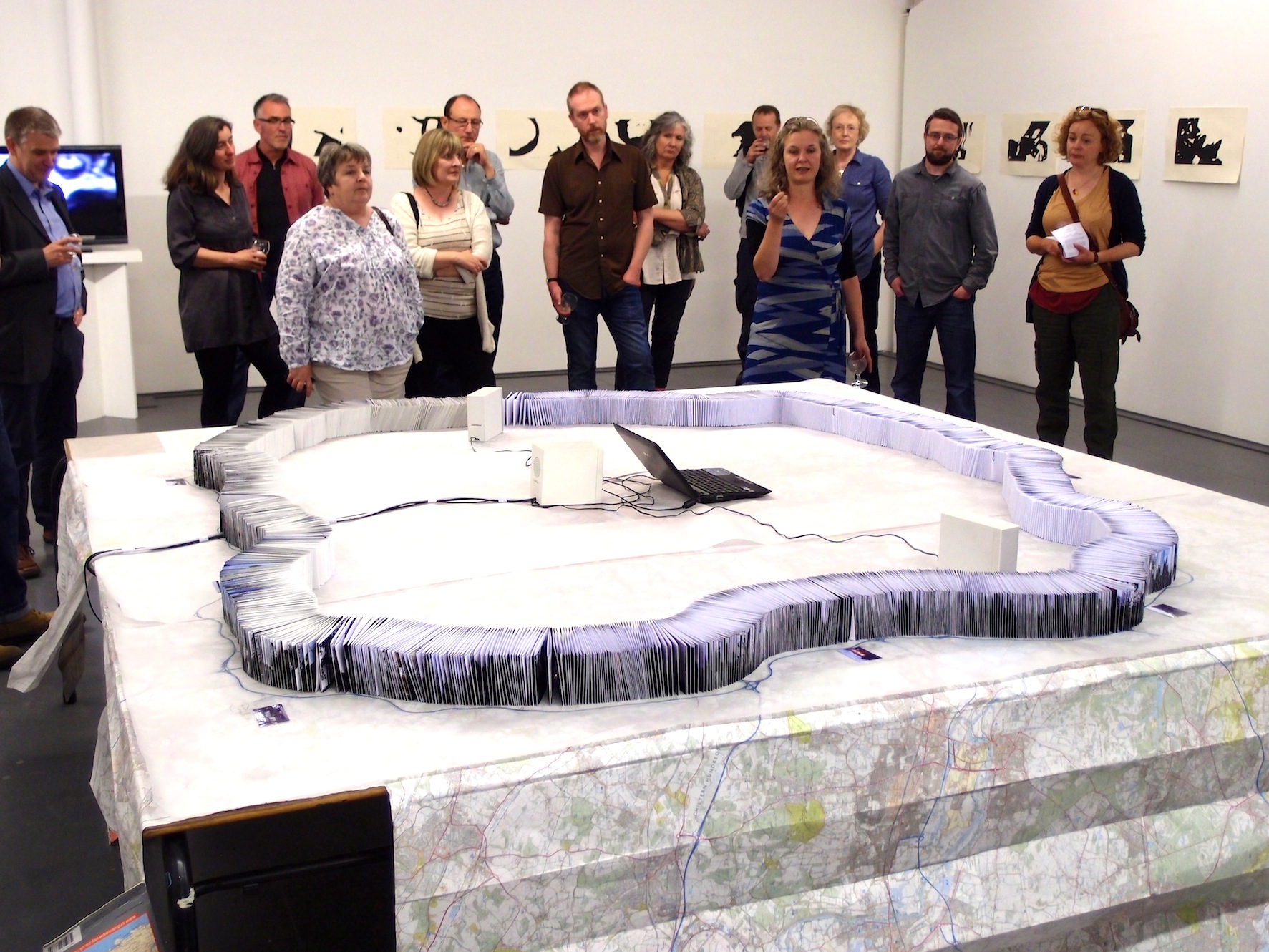
For Combinations Chance is re-presenting this work in archive form. The M25 in 4,000 images makes tangible what was originally relayed digitally, here represented as a unique book/sculpture work, digitally printed, cut folded and put together by hand. Placed on top of a giant map and drawing of the M25 motorway route to 1:2500 scale, the city boundary that it represents is reinforced by the three-dimensional printed work. The original relay of images is replayed from its Internet storage place, making visible, what can only be glimpsed at through the mass of images encompassing the concertina form, the sound a reminder of the original running activity.
Nicholas Devison mines visual ephemera as a method of elaborating new patterns of meaning from disparate and often fragmented source material.
The images shown here, Inside Space I, II, III and Still (Mars), Still (Venus) reflect his passions and preoccupations – many of which allude to the history of technology, from cosmological diagrams to renaissance perspectival illustration – and are re-presented through an invented ground as a means of exploring ideas of location, mapping, time and space.

In making this work he is interested in teasing out the allusions, which emerge between invention and appropriation. The resulting connections – which appear simultaneously fixed yet indeterminate, familiar yet incongruous – act for Devison as markers for negotiating meaning within a fluid and unfolding visual field.
Mark Graver’s Undertow is a linked series of HD videos, shot from under water looking up towards the sky during rainfall, and photopolymer metal salt etchings.
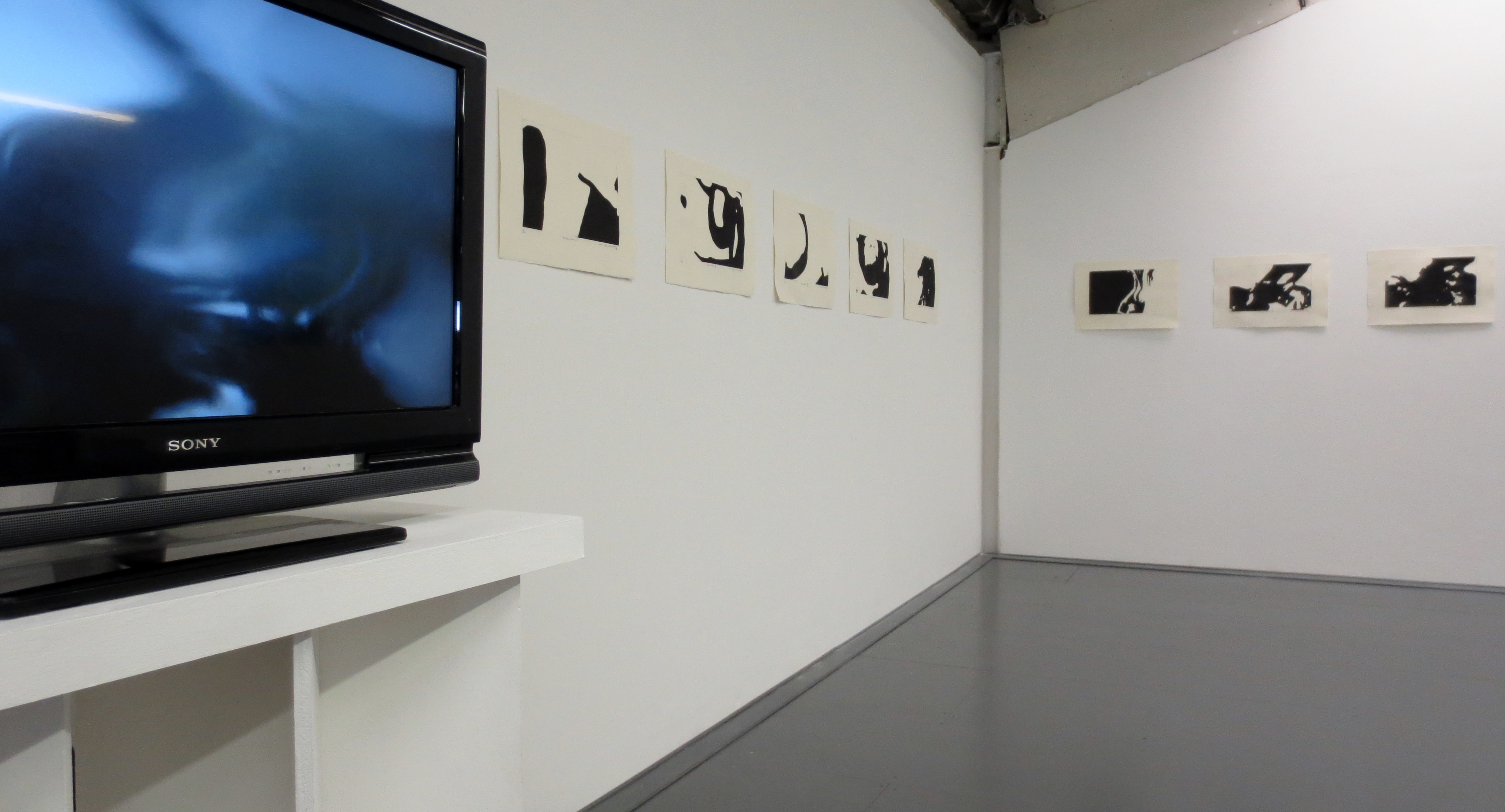
The concern with the videos is to capture the effects of light, shadow and sound at a particular place and point in time. There is no editing other than changing the speed and setting the duration of each video to two minutes.
The photopolymer etchings are produced from isolated video stills, manipulated in Photoshop then etched into aluminium plates.
The intention is to create a fluid installation using elements of the different mediums to explore connections, similarities and differences between the moving, temporal and the still images and between photographic and traditional printmaking processes.
Johanna Love’s research and practice explores notions of visual emptiness and temporality through a combination of digital photographic and drawing languages. Love is interested in generating dualities in reading and meaning within images; between material presence of the artists’ hand and the dislocated technological mark; between presence and absence and between visual certainty and ambiguity.

Current works such as Unbekannt Horizonte (Unknown Horizons) shown here, use landscape photographic images as a constructive pictorial device through which to investigate perceptual ambiguity and spatial disjunctions; juxtaposing material and digital imagery to amplify the paradox between beauty and mortality.
Love is intrigued by how images made through various processes may reveal a unique sense of materiality and temporality and how as artists we may use these distinct sensibilities to direct the reading of artworks.
Stephen Mumberson’s practice has encompassed 3D forms for a number of years with early attempts involving the use of relief print and tissue structures.
The availability of several different types of rapid prototyping machines opened up his first chance to draw up a structure in a virtual form and then print the form in layers through a heated inkjet head – line by line, layer by layer. The finest structures could be printed with a support plastic material that was removed by being dissolvable in a chemical bath. This allowed for a great freedom of invention, formal creation and the further development of ideas.

The advancements in 3D print technology allow Mumberson to improvise and collage in a virtual world then print out forms with an open and unpredictable expression influenced by his continued interest in architecture, organic geometry and a desire to stretch print imagery over a sculptural form.
Working with a machine using ABS plastic at Middlesex University Mumberson drew in Solid Works software using a very basic set of rules to construct the 3D Prints.
Combinations from Mark Graver on Vimeo.

